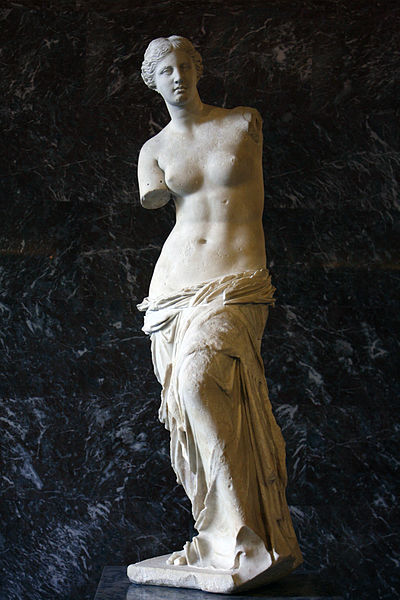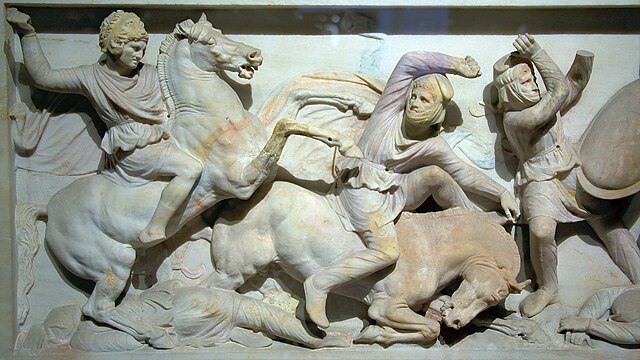The Venus de Milo or Aphrodite of Melos is an ancient Greek marble sculpture that was created during the Hellenistic period. Its exact dating is uncertain, but the modern consensus places it in the 2nd century BC, perhaps between 160 and 110 BC. It was rediscovered in 1820 on the island of Milos, Greece, and has been displayed at the Louvre Museum since 1821. Since the statue's discovery, it has become one of the most famous works of ancient Greek sculpture in the world.
Venus de Milo
Front view
Three-quarter view
Back view
Hellenistic art is the art of the Hellenistic period generally taken to begin with the death of Alexander the Great in 323 BC and end with the conquest of the Greek world by the Romans, a process well underway by 146 BC, when the Greek mainland was taken, and essentially ending in 30 BC with the conquest of Ptolemaic Egypt following the Battle of Actium. A number of the best-known works of Greek sculpture belong to this period, including Laocoön and His Sons, Venus de Milo, and the Winged Victory of Samothrace. It follows the period of Classical Greek art, while the succeeding Greco-Roman art was very largely a continuation of Hellenistic trends.
Scene from the Alexander Sarcophagus
Bronze portrait of an unknown sitter, with inlaid eyes, Hellenistic period, 1st century BC, found in Lake Palestra of the Island of Delos.
The Barberini Faun, 2nd-century BC Hellenistic or 2nd-century AD Roman copy of an earlier bronze
The Ludovisi Gaul killing himself and his wife, Roman copy after the Hellenistic original, Palazzo Massimo alle Terme.








